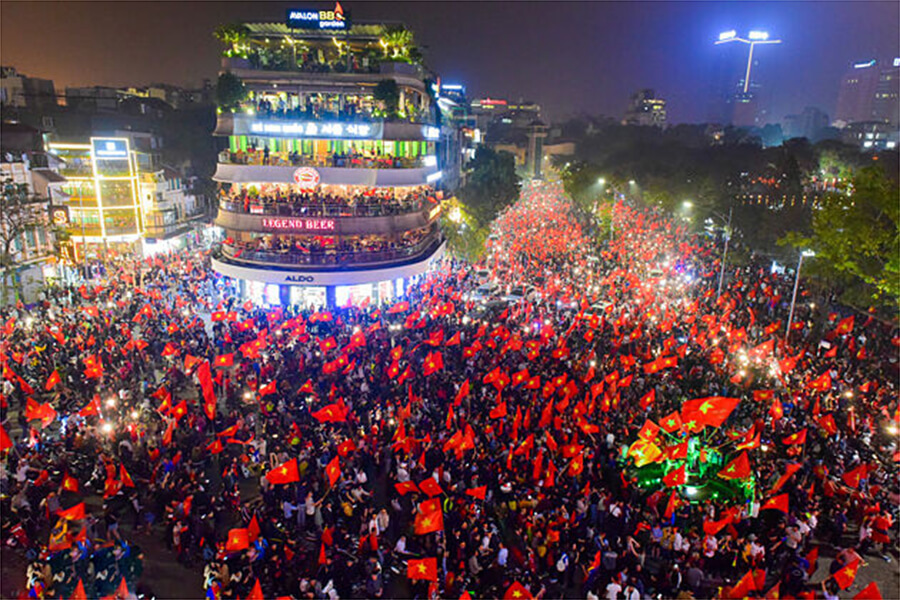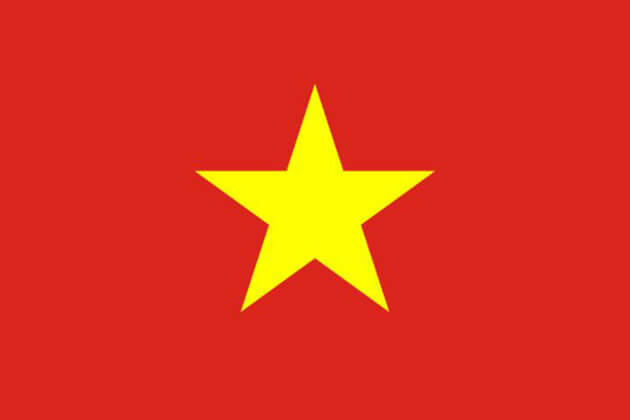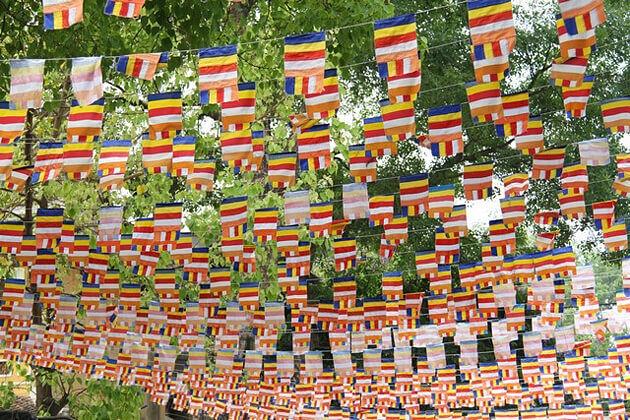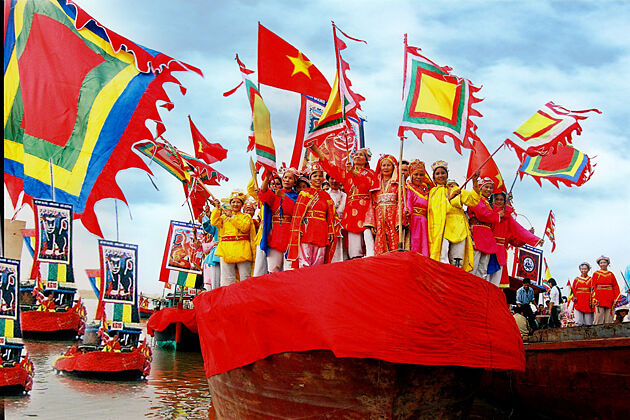If your Indochina tour to Vietnam occurs during any celebrations, you will see that people hang all kinds of flags on the streets and at the festival sites. Let's take a closer look at Vietnamese flags and their meaning to know more about this amazing S-shape country.
Vietnamese National Flag
Vietnamese national flag has a yellow star in the middle of a red background. You will see easily see this flag on streets and buildings, especially during any national celebrations. Vietnamese are known patriots and the design of the flag says a lot about this characteristic.
The present Vietnamese flag was created in 1939 by a teacher working for the Vietnam communist party. It has a very simple design but hides a great meaning. The flag has two main colors with red stands for blood and yellow stands for the color of Vietnamese people’s skin. The yellow star in the middle with five focal points stands for five types of people at that time including intellectuals, farmers, workers, business people, and soldiers.
The national flag has a special meaning to Vietnamese people. You can see people hang this flag on the street, during special events, and woven it on shirts. However, you won’t see the flag pattern on pants, pieces of clothing below the waistline, or bikinis.
Vietnamese Flag of Buddhism
The Vietnamese flags of Buddhism can be divided into two parts. The first one is five vertical stripes in the shades of blue, yellow, red, white, and orange respectively. The second part is on the fly which has the same color scheme but placed horizontally.
Buddhists believe that when the Buddha attained Enlightenment, his body emanated 5 colors represented on six vertical bands of the flag. The colors also have a deeper meaning to them:
Blue (Nīla) represents The Spirit of Universal Compassion – including love, peace, and charity
Yellow (Pīta) represents The Middle Way – teaching people to avoid extremism and have an ascetic life
Red (Lohita) represents The Blessings of Practice – including achievement, wisdom, virtue, fortune, and dignity
White (Odāta) represents The Purity of Dhamma – leading to liberation, timeless
Orange (Manjesta) represents The Wisdom of the Buddha's teachings
The sixth vertical band, on the fly, is the combination of the other five bands on the flag, representing the compound of the auras. This compound is the Truth of the Buddha's teaching Pabbhassara, also known as the “essence of light”.
Vietnamese Flag in Festivals
Vietnamese festival flag has five colors and is often referred to as “co ngu sac” (five-colored flag). We often see the festival flags of various colors and shapes on the occasion of traditional festivals in Vietnam. This kind of flag is also used in festivals related to legends, antiquities and Vietnamese history as flags of Hung Vuong, Hai Ba Trung, King Quang Trung, etc. There are two kinds of Vietnamese flags in festivals: the square flag and the arrow-shaped flag (looks like a triangle).
These are the traditional flags of the Viet race. Of course, the flag that symbolizes a culture, a nation, a people, a tribe has to bear some symbolic meaning and that meaning is often expressed in the identity and cultural core of a nation. No one knows exactly when Vietnamese people started to use the five-color flag, but according to the ancient paintings and folk tales, this flag had emerged since Hai Ba Trung (40 - 43) era. This colorful flag has been used for thousands of years in all festivals, temples, pagodas, and religious sites across the country. The appearance of the five colors on the flag corresponds to the five elements with green, red, yellow, white, and purple respectively.





